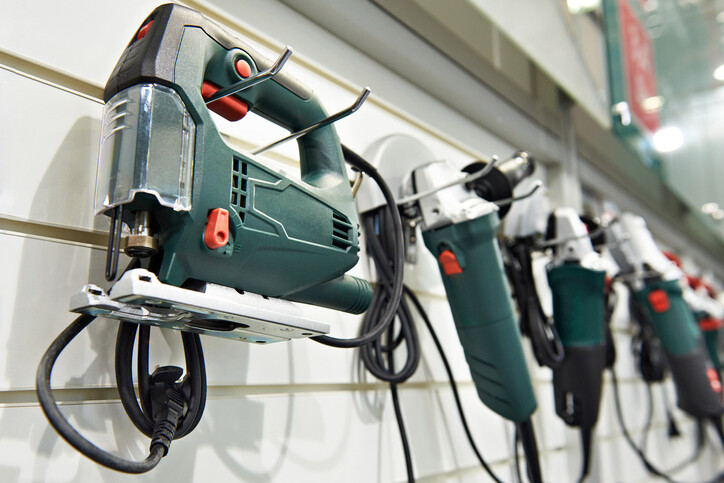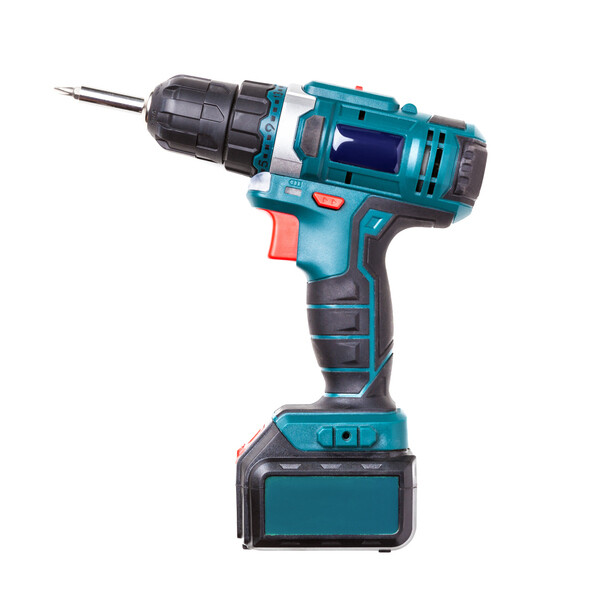 The role of power tools in commercial and residential projects
The role of power tools in commercial and residential projects
There are a number of power tools that most people are familiar with and that are a staple of construction projects the world over. Sanders, saws, drills and impact drivers are some of the most basic tools for a number of commercial, residential and DIY projects.
- Drills and impact drivers are essential for jobs that require fastening things together or drilling holes to insert anchors for screws.
- Saws are fundamental for precision cutting in a variety of materials.
- Sanders can be used for numerous carpentry jobs including flooring.
This power tool guide will cover the basics of some of the most popular power tools available for hire as well as providing useful information for DIY enthusiasts, professional contractors or anyone interested in power tools. At Paragon Tool Hire we offer a range of equipment from drills and saws to access towers and excavators. Speak to our team for helpful advice.
Basic Power Tools for the General Public
1. Sanders
Sanding used to be a job done by hand, and while there are many instances in which this method of sanding is preferred, power tools have made many jobs a lot easier. There are a number of specialised sanders, some for material removal and others for fine finishing or polishing. Furthermore, many designs have been developed for different tasks such as drywall sanding such as the Flex WSE600, built for hard to reach areas. Let’s have a look at some of the sanders available and what they are used for:
- Belt Sanders: Belt sanders use a belt of sandpaper mounted onto two drums that are turned by a motor. They are aggressive and generally used to remove material, including finishes or paint, rather than doing finishing or detail work. They can be handheld or mounted on a bench, in which case they are called bench sanders. Some come equipped with fittings for dust collection bags or dust extraction systems. The Makita 9401, for example, is equipped with a dust extraction bag and is an ideal machine for carrying out a rough sanding job.
- Orbital Sanders: An orbital sander moves a square or circular piece of sandpaper in small circular motions to achieve smooth finishes without leaving the marks a belt sander would leave. A Makita BO6030 is the go to orbital sander for finer sanding work, leaving fewer marks and achieving a finer finish.
- Random Orbital Sanders: A random orbital sander is similar to an orbital sander with the distinction that it rotates in addition to moving in an orbital motion. This feature makes the random orbital sander able to sand independently of the direction of the wood, leaving a smooth finish with no swirl marks.
- Floor Sanders: Floor sanders are normally belt sanders or orbital sanders that are designed to be operated standing up. They are much larger in comparison to a belt or orbital hand sander, so they can cover more area. The Hiretech HT8-1.2 is a belt sander suitable for removing floor finishes and levelling uneven areas. The Hiretech HT7-2 on the other hand is an edge sander, especially designed to sand the edges of a room up to the skirting board.
2. Saws
There are a number of saw designs available to fit all sorts of applications, from fine wood work to heavy duty demolition jobs. Circular saws, jigsaws, reciprocating saws and mitre saws are some of the most popular types of saws in the DIY and construction industry. While they are all designed to make cuts, they utilise different mechanisms and blades.
What are the different types of saw blades?
There are long blades and circular blades. Long blades, often referred to as reciprocating blades, are used on machines like jigsaws or reciprocating saws and are able to cut irregular shapes and curves. Circular blades are useful for most applications, but are mostly designed for straight or angled cuts. Furthermore, it should be noted that there are many types of reciprocating and circular blades designed to fit different machines, made from different materials and with different tooth configurations. This section will cover the most popular and versatile saws available to provide you with the information you need to make the right decision when hiring or purchasing a saw:
- Circular Saws: Circular saws use a rotating blade to make straight cuts through various materials including wood and masonry. They are usually used for plywood, framing timber or other flat pieces of wood. A Makita BSS610RFE cordless circular saw is a convenient and versatile tool with a 57mm cutting depth. While the handheld version of this type of saw is called a circular saw, there are other configurations such as the table saw, chop saw or mitre saw which are mounted and have different applications.
- Mitre Saws: Similar to a circular saw, but mounted on a platform so that it cuts in a downward chopping motion, a mitre saw can be adjusted so that the blade is at an angle to make mitre cuts. A Makita LS1013 electric mitre saw is the perfect tool for accuracy when building a frame, a box or for doing other carpentry jobs.
- Jigsaws: A jigsaw like the Makita 4340CT is a saw with a long, reciprocating blade that can cut irregular curves, such as stencilled designs in wood and other materials. They can be corded or cordless and use a blade that normally cuts on the upstroke, although downstroke cutting blades can be used for finer woodwork to reduce the risk of chipping.
- Reciprocating Saws: A reciprocating saw has a long blade that moves back and forth and in an oval pattern. Unlike a jigsaw where the blade points downwards, the reciprocating saw's blade points forwards, making it ideal for cutting into materials and for demolition. A Makita JR3060T recep saw is ideal for cutting through wood, meta, and other materials.
 3. Drills and Impact Drivers
3. Drills and Impact Drivers
Drills and impact drivers are some of the most essential tools used for construction, DIY and other projects such as mechanical work. Although these tools are frequently grouped in the same category, they are different tools, each with its own applications.
What’s the difference between a drill and an impact driver?
A drill is designed to make a hole in material, whether it be wood, brick, concrete, stone, plastic or another material. An impact driver, on the other hand ,produces higher torque and is designed to drive screws into material rather than drilling. Both use a chuck, which is the rotating clamp at the end which holds the drill bit, and use rotating motion powered by a motor.
There are many designs for drills depending on their intended applications. This section will cover the most commonly used types of drills:
- Rotary Drills: These are the most simple type of drill, designed for making holes in various materials. They can be corded or cordless, and usually come with hammer action, like the Makita HR4500C, making them ideal for drilling into hard materials like concrete or masonry.
- Impact Drivers and Impact Wrenches: Impact drivers such as the cordless Makita BTP140RFE are ideal for driving screws into materials like wood, while impact wrenches like the Makita DTW450 are ideal for tightening and loosening bolts.
- Magnetic Drills: A magnetic drill like the BDS MAB100 uses a strong magnet on its base to stay in place while drilling into metals like iron or steel.
- Diamond Core Drills: Drills like the Makita 8406 are designed for masonry and use diamond core drill bits. Rather than drilling a regular hole, these core drill bits have a hollow cylindrical shape with a pilot drill bit in the middle to drill large holes with much less energy expenditure. They leave behind a solid piece of material referred to as a "core", and similar drills are used by geologists to obtain core samples for research.
- Right Angle Drill: Drills like the Makita 6300LR right angle drill are simply regular drills designed with a right angle chuck to fit into hard to reach areas.
Why Choose Paragon Tool Hire for Power Tool Hire?
At Paragon Tool Hire, we understand the importance of high-quality equipment for your projects. Our extensive range of equipment caters to all your construction needs, ensuring efficiency and professional results. Whether you require drills, impact drivers, saws or other equipment for a construction or DIY project, we've got you covered. With our competitive rates and expert advice, you can set yourself up for success. We are committed to providing you with high-quality power tools for your projects, as well as leading customer support. Call our friendly team today on 01280822282.
